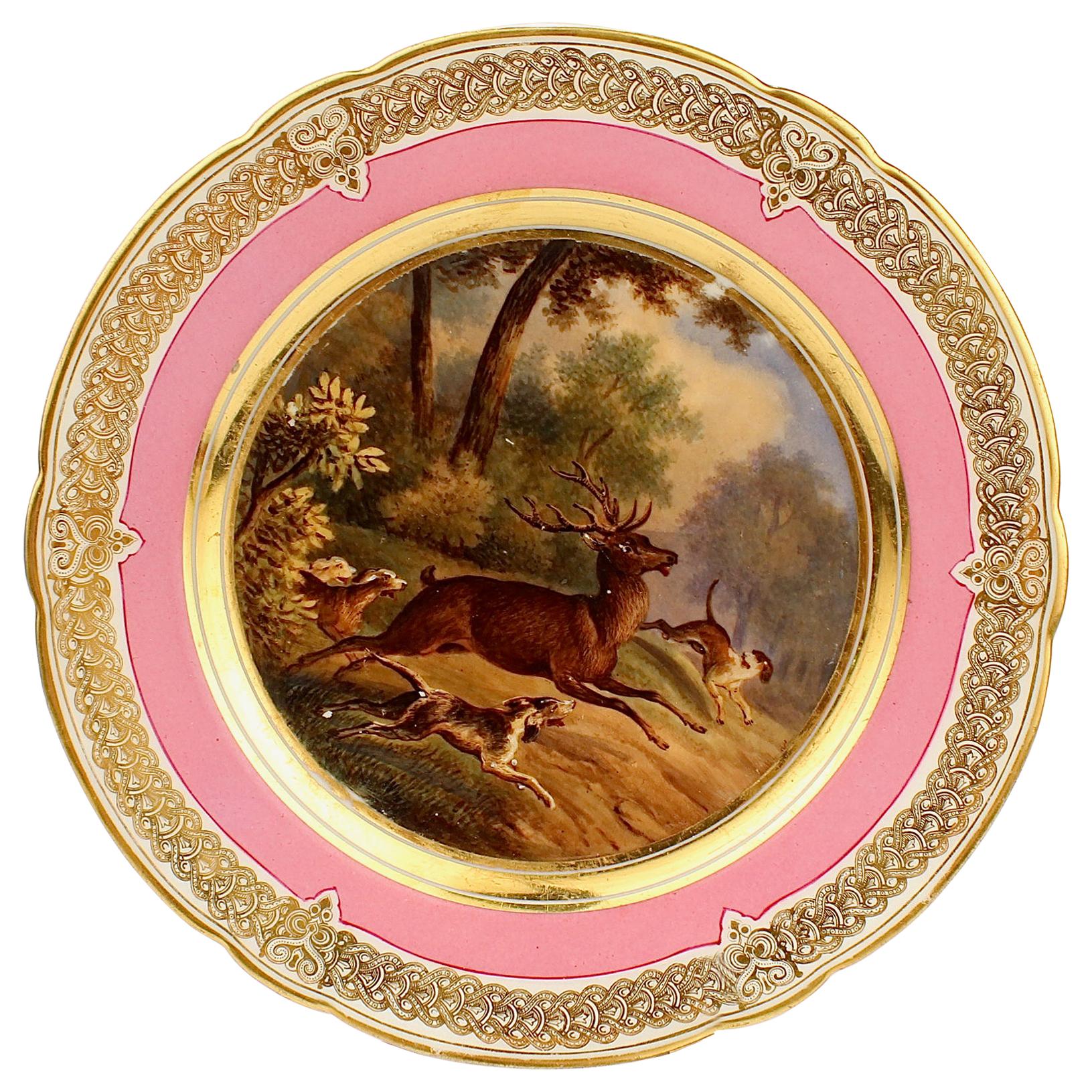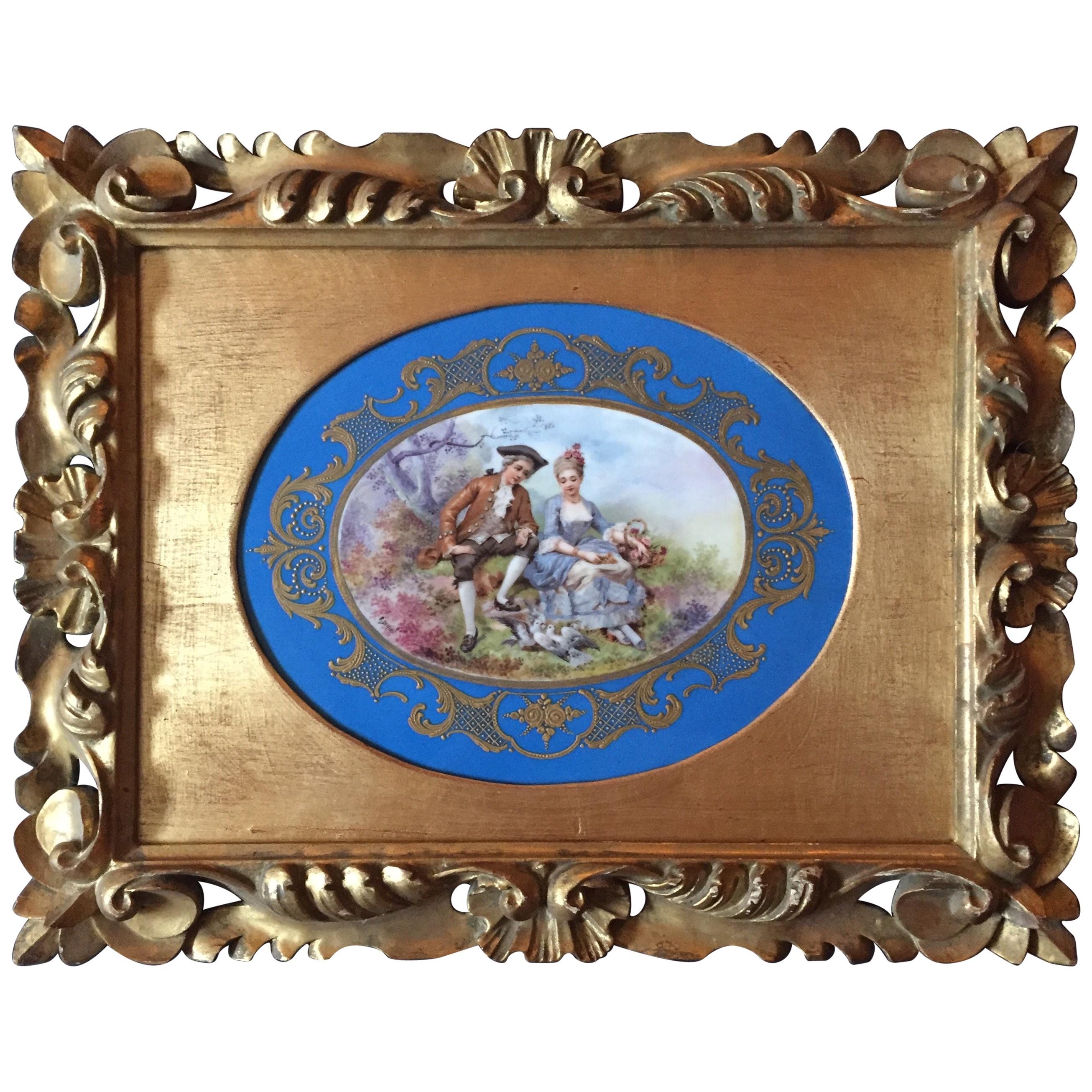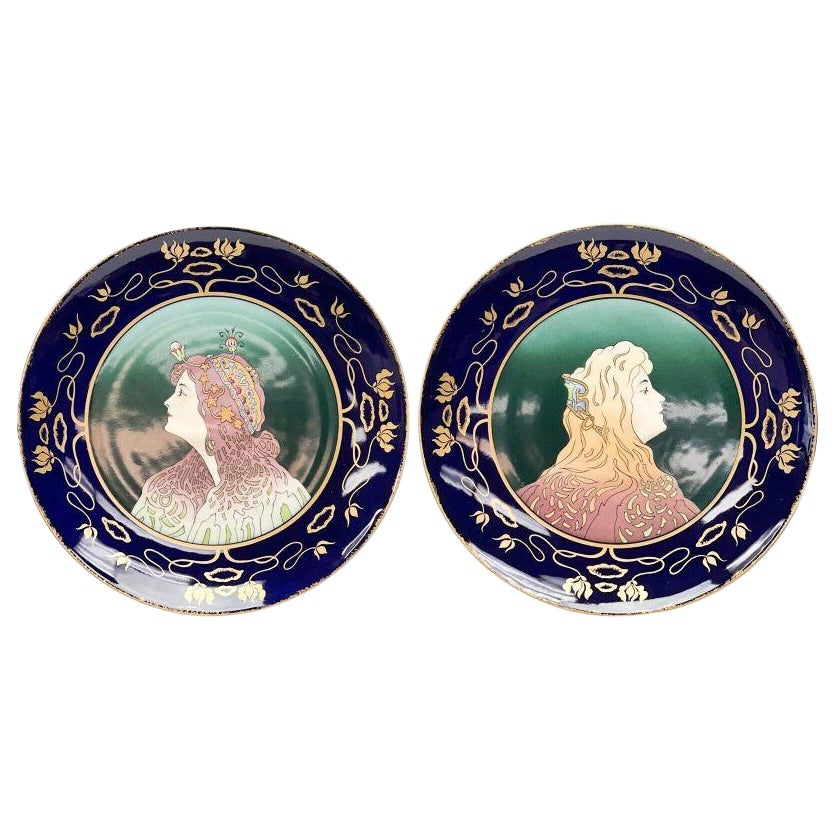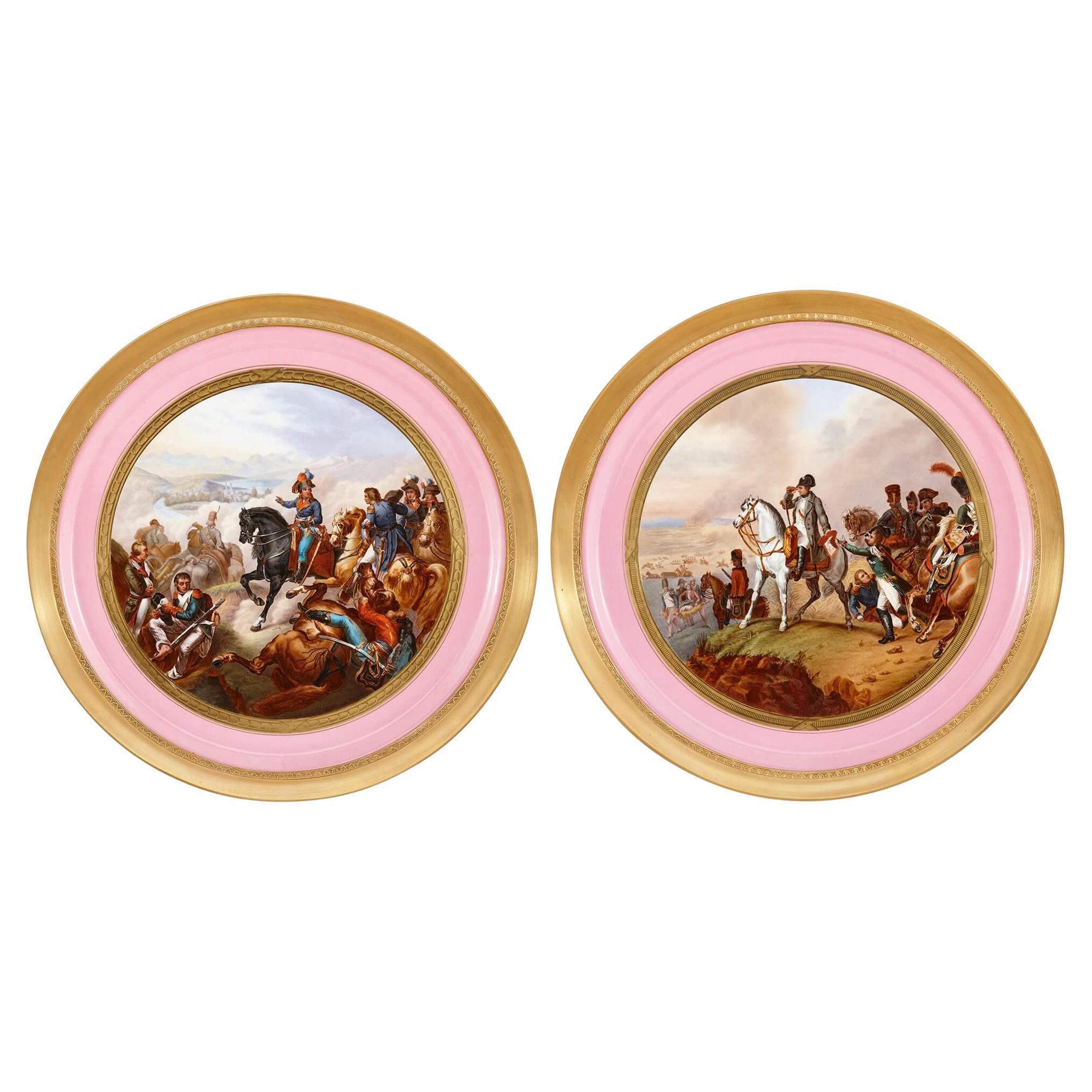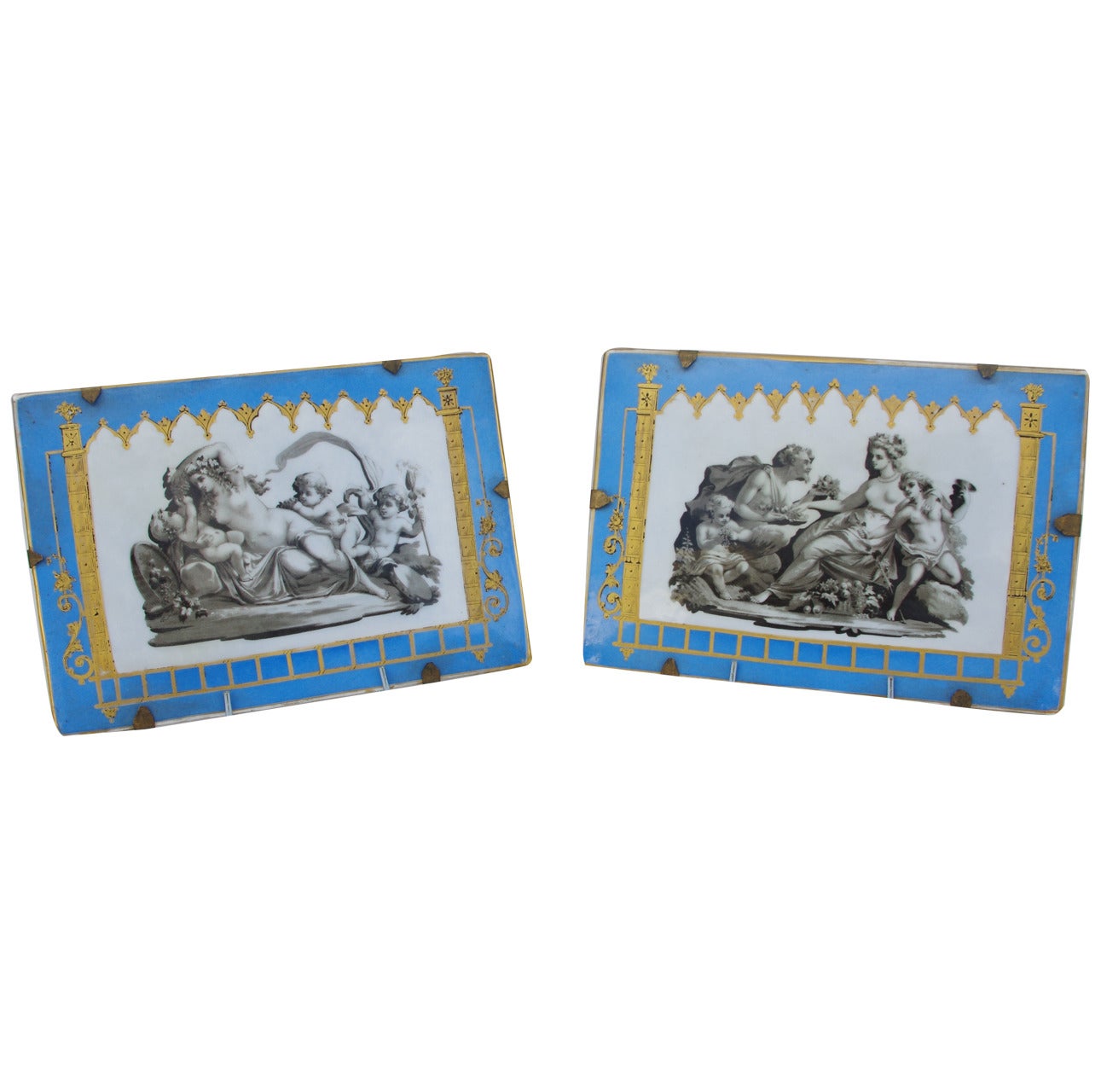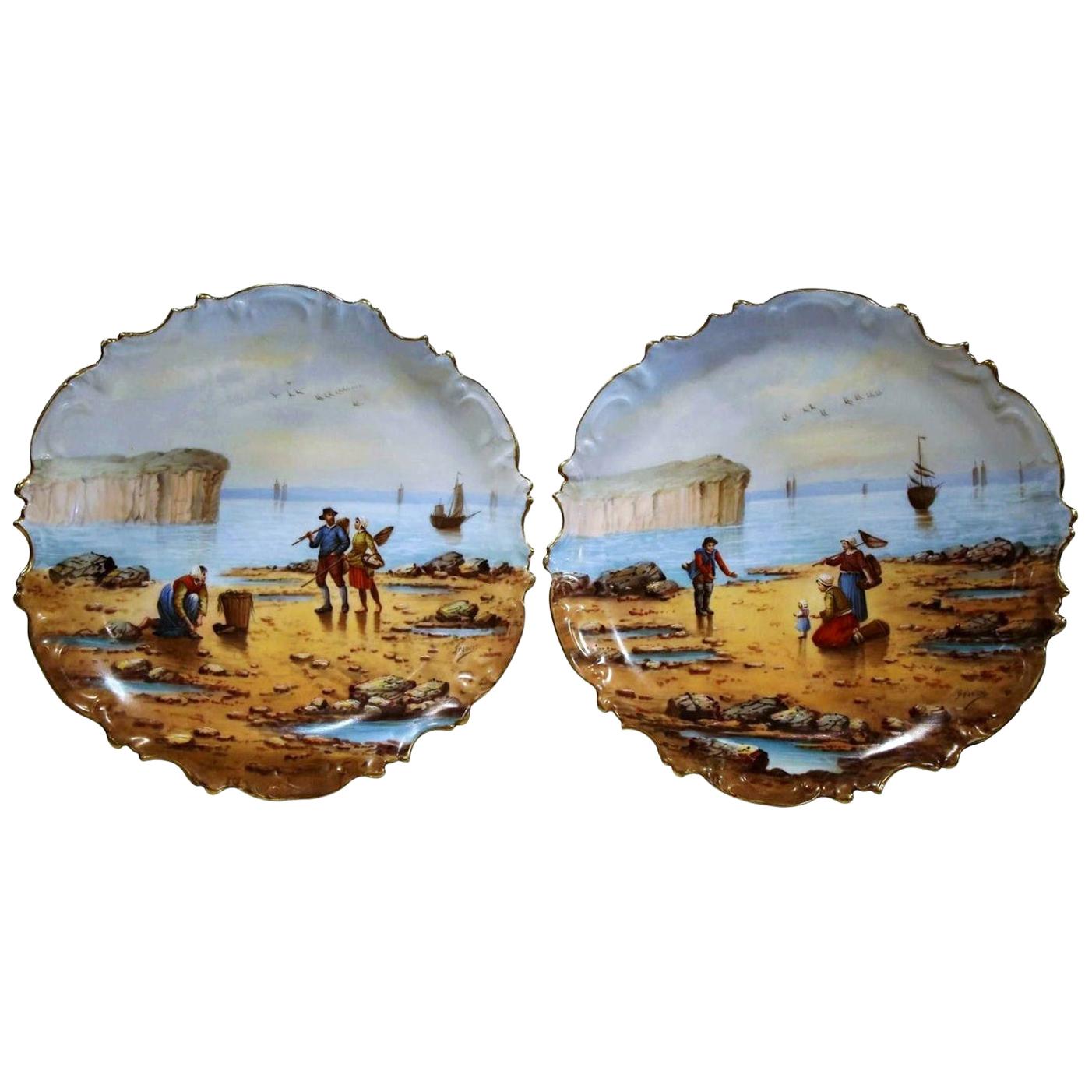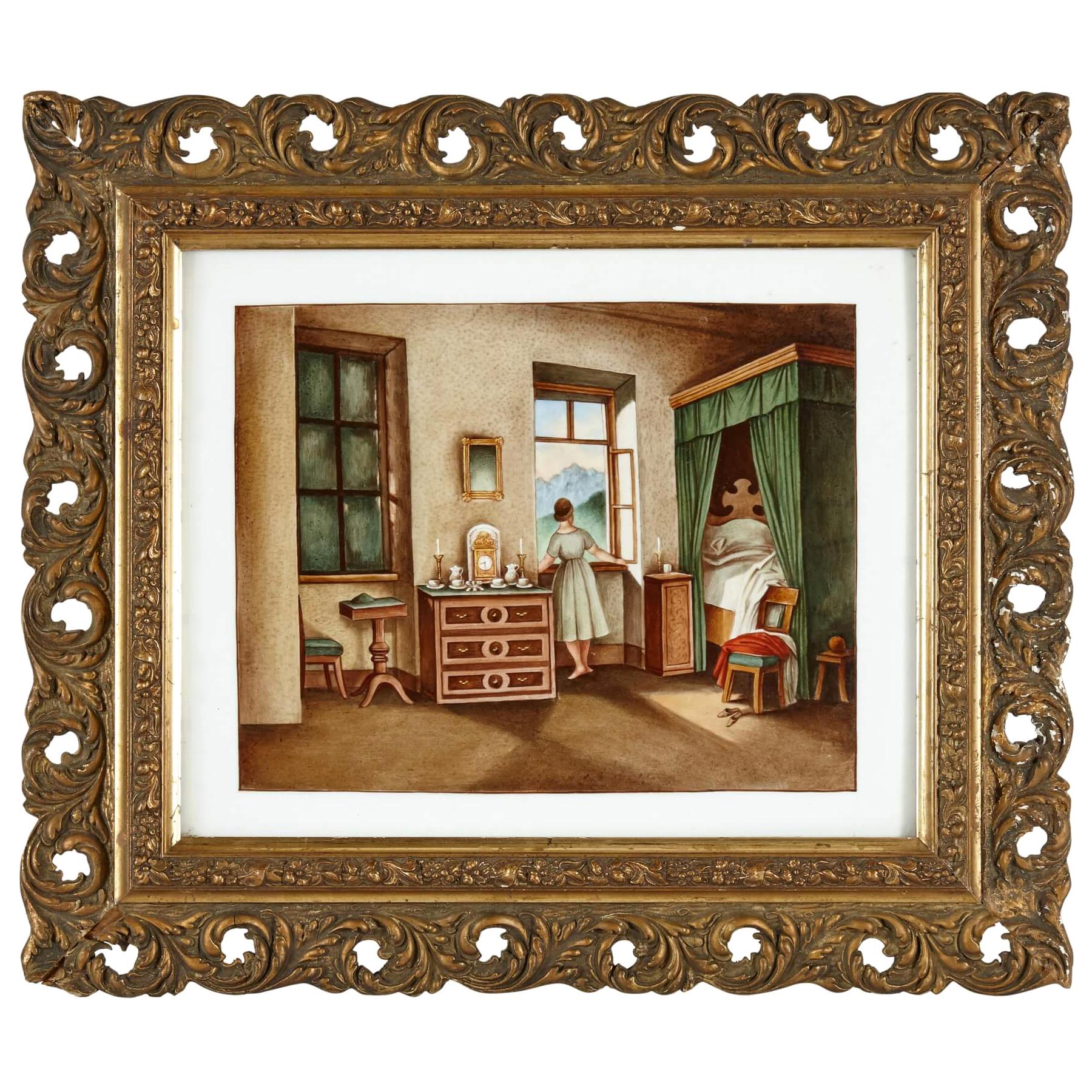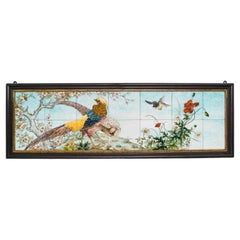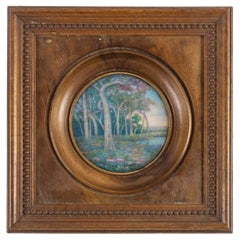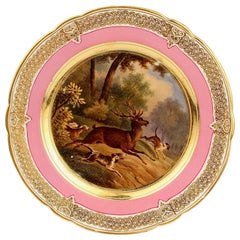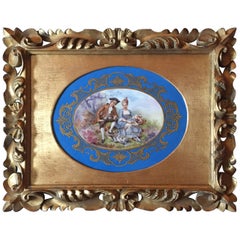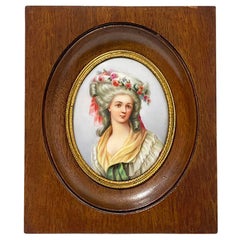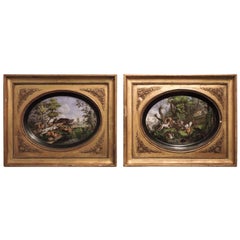
Pair of Framed Hand-Painted Paris Porcelain Hunting Scenes, after N. Desportes
View Similar Items
Want more images or videos?
Request additional images or videos from the seller
1 of 11
Pair of Framed Hand-Painted Paris Porcelain Hunting Scenes, after N. Desportes
About the Item
- Similar to:Nicolas Desportes (Artist)
- Dimensions:Height: 18.51 in (47 cm)Width: 14.97 in (38 cm)Depth: 1.19 in (3 cm)
- Sold As:Set of 2
- Style:Restauration (Of the Period)
- Materials and Techniques:
- Place of Origin:
- Period:
- Date of Manufacture:circa 1830
- Condition:Wear consistent with age and use. Minor losses. (Minor losses only on the frames, porcelain in very good condition).
- Seller Location:Saint-Ouen, FR
- Reference Number:1stDibs: LU261239067173
About the Seller
4.9
Vetted Seller
These experienced sellers undergo a comprehensive evaluation by our team of in-house experts.
1stDibs seller since 2017
56 sales on 1stDibs
Typical response time: 1 hour
More From This SellerView All
- Pair of Porcelain Vases Ormolu-Mounted in Lamps by Gagneau Paris XIXth CenturyBy Gagneau ParisLocated in Saint-Ouen, FRPair of large Japanese Porcelain Cone Shape Vases with Imari decoration Important mounts in ormolu and gilded metal, the base decorated with a laurel wreath, the upper part of falling leaves and a frieze of knotted ribbon. The mounts signed Gagneau, 115 R. Lafayette. Circa 1860 With their original aluminium bulb cover and original gilding Vase it self Height 47 cm The Gagneau Company is one of the most famous lighting factories in Paris in the nine-teenth century, established in 1800 at 25 rue d'Enghien in Paris and later at 115 rue de Lafayette. She has participated in many exhibitions throughout this century. She began in 1819 with the Exposition des Produits de l'Industrie and later participated in the Universal Exhibitions where she was part of the jury in the category of art bronzes (class 25) at the Universal Exhibition in Paris in 1889. "Imari" was simply the trans-shipment port for Arita wares, from where they went to the for-eign trading outposts at Nagasaki. It was the kilns at Arita which formed the heart of the Japanese porcelain industry. Arita's kilns were set up in the 17th century, after kaolin was discovered in 1616. A popular legend attributes the discovery to an immigrant Korean potter, Yi Sam-Pyeong (1579–1655), although most historians consider this doubtful. After the discovery, some kilns began to produce revised Korean-style blue and white porcelains, known as Early Imari, or "Shoki-Imari". In the mid-17th century, there were also many Chinese refugees in northern Kyushu due to the turmoil in China, and it is said that one of them brought the overglaze enamel coloring technique to Arita. Thus Shoki-Imari developed into Ko-Kutani, Imari, and later Kakiemon, which are sometimes taken as a wider group of Imari wares. Ko-Kutani was produced around 1650 for both export and domestic market.Kutani Ware is characterized by vivid green, blue, purple, yellow and red colors in bold designs of landscapes and nature. Blue and white porcelain pieces continued to be produced and they are called Ai-Kutani. Ko-Kutani Imari for the export market usually adopted Chinese design structure such as kraak style, whereas Ai-Kutani for the domestic market were highly unique in design and are ac-cordingly valued very much among collectors. Ko-Kutani style evolved into Kakiemon-style Imari, which was produced for about 50 years around 1700. Kakiemon was characterized by crisp lines, and bright blue, red and green designs of dramatically stylized floral and bird scenes. Imari achieved its technical and aes-thetic peak in the Kakiemon style, and it dominated the European market. Blue and white Kakiemon is called Ai-Kakiemon. The Kakiemon style transformed into Kinrande in the 18th century, using underglaze blue and overglaze red and gold enamels, and later additional colors. Imari began to be exported to Europe when the Chinese kilns at Jingdezhen were damaged in the political chaos and the new Qing dynasty government halted trade in 1656–1684. Ex-ports to Europe were made through the Dutch East India Company, and in Europe the des-ignation "Imari porcelain" connotes Arita wares of mostly Kinrande Imari. Export of Imari to Europe stopped in mid-18th century when China resumed export to Eu-rope, since Imari was not able to compete against Chinese products due to high labor costs. By that time, however, both Imari and Kakiemon styles were already so popular among Eu-ropeans that the Chinese export porcelain copied both, a type known as Chinese Imari. At the same time, European kilns, such as Meissen and English potteries such as Johnson Bros. and (Royal) Crown Derby, also imitated the Imari and Kakiemon styles. Export of Imari surged again in late 19th century (Meiji era) when Japonism flourished in Europe.Thus, in the western world today, two kinds of true Japanese Imari can...Category
Antique 1880s French Japonisme Table Lamps
MaterialsBronze
$8,422 Sale Price / set30% Off - Théodore Deck (1823-1891) Faience Paneled Fourteen-Tile Rectangular Wall PlaquBy Theodore DeckLocated in Saint-Ouen, FRA Théodore Deck (1823-1891) Faience Paneled Fourteen-Tile Rectangular Wall Plaque Polychromic Earthenware very finely hand-painted, designed with a couple of pheasants among vegetat...Category
Antique 1870s French Japonisme Decorative Art
MaterialsFaience, Wood
- Paul Bonnaud (1876 - 1953) Symbolist Art Nouveau Enamel "Landscape" , c.1900By Paul BonnaudLocated in Saint-Ouen, FRPaul Bonnaud (1876–1953), Limoges “Trees by a Lake” Symbolist Art Nouveau Landscape A circular polychromic enamel plaque. In a carved varnished wood frame Signed and located Limoges Circa 1900 Paul Bonnaud was a master enameler in Limoges at the beginning of the 20th century, he belongs, with Jules...Category
Antique Early 1900s French Art Nouveau Decorative Art
MaterialsEnamel
- French 19th Century Pair of Porcelain Cache-PotsLocated in Saint-Ouen, FRPair of polychromed hand painted porcelain with Japonisme floral decoration Ormolu-mounted with open-worked base and rim Louis XVI Style circa 1880.Category
Antique 1870s French Chinoiserie Planters, Cachepots and Jardinières
MaterialsOrmolu
$1,925 Sale Price / set20% Off - French Pair of Napoleon III Ormolu Wall-Lights after Jean-Charles DelafosseBy Jean-Charles DelafosseLocated in Saint-Ouen, FR19th Century French Pair of chiseled and gilded bronze wall-lights, the fluted barrel, from which acanthus leaves escape in scrolls forming two arms of light, and crowned with a fire pot, neck-shovels with twisted flutes, heart, hoes with leaves of water. Circa 1880 Parisian quality work of the late nineteenth century after a model by Jean-Charles Delafosse (1734-1791), famous french architect, ornamentist and painter. Original gilding Electrified H 40 cm L 36 cm P 20 cm The model of our sconces takes the creations of 18th century bronzers who were directly inspired by the drawings of Jean-Charles Delafosse in the 1760s. In particular, the collection of engravings...Category
Antique 1880s French Louis XVI Wall Lights and Sconces
MaterialsOrmolu
$2,450 Sale Price / set20% Off - Pair of French Napoléon III Curule ArmchairsLocated in Saint-Ouen, FRPair of French Napoléon III Curule Armchairs Moulded, carved, blackened wood, enhanced with gold. Open-banded back decorated with interlacing, X-bas...Category
Antique 1890s French Napoleon III Armchairs
MaterialsWood, Trimming
$3,150 Sale Price / set40% Off
You May Also Like
- Antique Pink Border Hand Painted Paris Porcelain Deer & Dog Hunting Scene PlateBy Darte FrèresLocated in Philadelphia, PAA wonderful antique 19th century Paris porcelain plate. With a hand painted scene of a hunt scene in a bucolic landscape including a large buck (10 point) and 3 hounds in chase. ...Category
Antique 19th Century French Beaux Arts Dinner Plates
MaterialsPorcelain
- 19th Century Unmarked Sevres Hand-Painted Porcelain Plaque, Hand Carved FrameBy Manufacture Nationale de SèvresLocated in Vero Beach, FLA circa 1880 masterpiece of a young couple feeding doves. This is a superb example of a 19th century unmarked Sèvres hand painted porcelain plaque. Signed by the artist R. Deniau. Th...Category
Antique 1870s French Rococo Decorative Art
MaterialsPorcelain, Wood
$780 Sale Price35% Off - Miniature Framed Portrait of a Lady Painted on PorcelainLocated in Delft, NLMiniature framed portrait of a lady painted on porcelain An oak wooden frame with in oval placed porcelain plaque, painted with a scene of a lady w...Category
Antique 19th Century French Decorative Art
MaterialsWood, Porcelain
- Pair of Large Antique Hand-Painted Majolica Porcelain Plaques, Circa 1910-1920Located in New Orleans, LAPair of large antique hand-painted Majolica porcelain plaques, circa 1910-1920.Category
Early 20th Century Portuguese Decorative Art
MaterialsPorcelain
- Antique pair of Orientalist painted porcelain platesBy Montereau PotteryLocated in London, GBAntique pair of Orientalist painted porcelain plates French, 19th Century Height 5cm, diameter 35.5cm The pair of plates are finely painted, one depicting two Arabic men on horsebac...Category
Antique 19th Century French Porcelain
MaterialsPorcelain
- Antique French Hand-Painted Blue & Gold Sèvres Porcelain Framed Plaque, Ca. 1890Located in New Orleans, LAAntique French hand-painted blue and gold Sèvres Porcelain plaque in frame, Circa 1890.Category
Antique 19th Century French Porcelain
MaterialsWood, Sèvres
